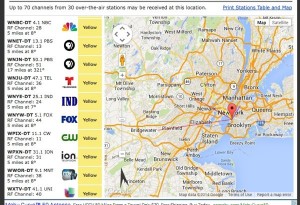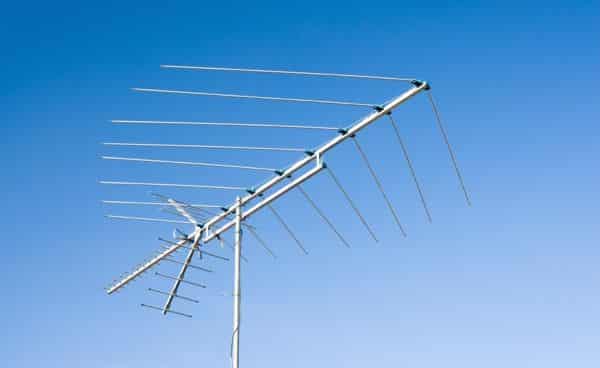Megan writes: My husband and I are finally ready to ditch cable and go back to free TV over the airwaves. Will the 30-year-old antenna up on our roof work with our HDTV, or do we need to upgrade to an HD antenna?
Hi Megan! Great question, and perfect timing. My wife and I just cancelled our cable TV service too (our cable bill kept creeping up and up), and now we’re getting our broadcast TV the old-school way: over the air.
And yes, I did go out and buy a TV antenna just for the occasion, but you might be a little surprised by what I got.
Instead of spending an arm and a leg on a fancy “HD-ready” antenna, I picked up a $9 pair of Radio Shack rabbit ears.

If you’re not sure what kind of antenna you’ll need, visit AntennaWeb.org and plug your street address into its database of local TV stations.
I plunked the thing in back of my 46-inch Sony HDTV, plugged it in, and presto: there were NBC, CBS, and Fox, all in crystal-clear HD. (ABC took a little fiddling with the antenna, but I got a clear signal eventually.)
In other words, any decent “over-the-air” antenna is perfectly capable of receiving HD signals, although the old TV reception rules still apply.
For instance, an indoor antenna will probably only work if you’re within 10 miles of your local TV transmission towers; any further away, and you’ll likely need a rooftop antenna. (I live on the second floor of a Brooklyn brownstone, just a few miles from the TV transmission towers on the Empire State Building, which explains why a cheap indoor antenna worked for me.)
You’ll also need to be mindful of trees, tall buildings, deep valleys, and other local topography that may play havoc with your HD reception.
Last but not least, over-the-air HD signals tend to be pretty finicky. With analog TV, you could still get a picture with a weak signal, albeit one marred by static or faint double-images, a.k.a. “ghosting.” With over-the-air HD transmissions, you’ll either get a perfect picture or nothing at all.
Need help? Visit AntennaWeb.org and plug your street address into its database of local TV stations.
The site will show you all nearby TV stations, along with a color-coded chart of the type of antenna you’ll need to get a solid signal—anything from a small “multi-directional” antenna to a large “directional” model. The chart will also tell you the direction in which your antenna should face for any given TV station.
Hope that helps, Megan, and good luck with your cord cutting. Still have questions? Post ’em below!

